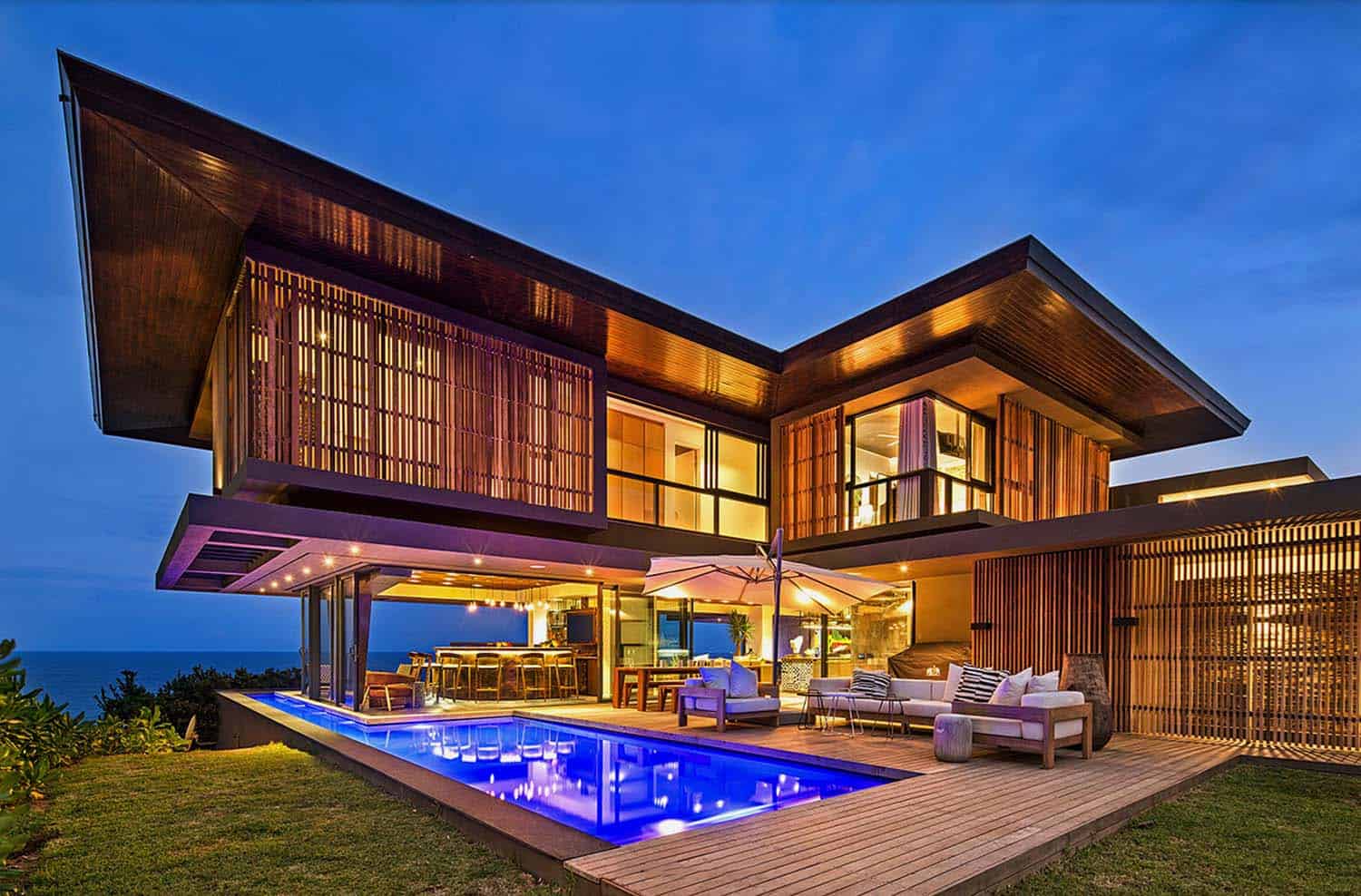In the realm of architectural design, the fusion of modernity with tropical elements has birthed a captivating style that resonates particularly well in the lush landscapes of Asia. These innovative structures seamlessly integrate contemporary aesthetics with the functional needs of tropical climates, offering both visual appeal and practicality. Let’s delve into the intricacies of what makes the best modern tropical houses in Asia stand out.

Embracing Nature: Blurring Indoor-Outdoor Boundaries
One of the defining features of modern tropical houses is their emphasis on blurring the boundaries between indoor and outdoor spaces. Expansive floor-to-ceiling windows, sliding glass doors, and open-plan layouts facilitate a seamless flow between the interior and the exterior, allowing residents to bask in the natural beauty of their surroundings.
Innovative architects leverage this design principle to maximize natural light and ventilation, reducing the reliance on artificial lighting and air conditioning. This not only enhances energy efficiency but also fosters a deeper connection with nature, as inhabitants are constantly immersed in the sights, sounds, and scents of the tropical environment.
Sustainable Materials: Harmonizing with the Environment
In the pursuit of sustainability, the best modern tropical houses in Asia often employ locally sourced materials that harmonize with the natural landscape. From reclaimed wood and bamboo to stone and clay, these eco-friendly materials not only lend a sense of authenticity to the architecture but also minimize the carbon footprint of construction.
Moreover, sustainable design strategies such as rainwater harvesting, passive solar heating, and green roofs further reduce the environmental impact of these homes, making them exemplars of responsible architecture in the face of climate change.
Innovative Design Solutions: Balancing Form and Function
Achieving the perfect balance between form and function is a hallmark of modern tropical architecture. Architects and designers employ innovative solutions to address the unique challenges posed by tropical climates, such as heavy rainfall, high humidity, and intense sunlight.
From elevated structures that mitigate flood risks to louvered facades that control sunlight and ventilation, every aspect of the design is carefully considered to enhance comfort and livability in tropical conditions. Additionally, features like shaded verandas, reflective pools, and cross-ventilation systems contribute to passive cooling, ensuring optimal thermal comfort without the need for excessive energy consumption.
Integration of Cultural Elements: Celebrating Diversity
Asia’s rich cultural heritage provides a wealth of inspiration for modern tropical architecture, with designers drawing upon traditional building techniques, materials, and motifs to create contemporary masterpieces that pay homage to the region’s heritage.
Whether it’s the intricately carved wooden screens of traditional Balinese architecture or the minimalist elegance of Japanese tea houses, these cultural elements add depth and character to modern tropical homes, infusing them with a sense of place and identity that resonates with inhabitants and visitors alike.
Personalized Spaces: Tailoring to Individual Needs
While modern tropical houses share common design principles, each project is uniquely tailored to suit the specific needs and preferences of its inhabitants. Whether it’s a sprawling villa overlooking the ocean or a compact urban residence nestled amidst lush foliage, architects collaborate closely with clients to craft spaces that reflect their lifestyle, aspirations, and values.
From custom-designed furniture and built-in storage solutions to personalized landscaping and outdoor amenities, every detail is meticulously curated to enhance functionality, comfort, and aesthetics, creating a sense of sanctuary that feels distinctly personal.
Conclusion: The Evolution of Tropical Living
In conclusion, the best modern tropical houses in Asia represent a harmonious synthesis of nature, culture, sustainability, and innovation. By embracing the inherent beauty and challenges of tropical environments, these architectural marvels offer a compelling vision for the future of sustainable living, where humans coexist harmoniously with their natural surroundings.
Through thoughtful design, innovative technologies, and a deep respect for local traditions, architects and designers continue to push the boundaries of what is possible, redefining the way we inhabit and interact with the tropical landscape. As we strive to create a more sustainable and resilient future, the lessons learned from these modern tropical houses serve as beacons of inspiration for architects, homeowners, and communities around the world.